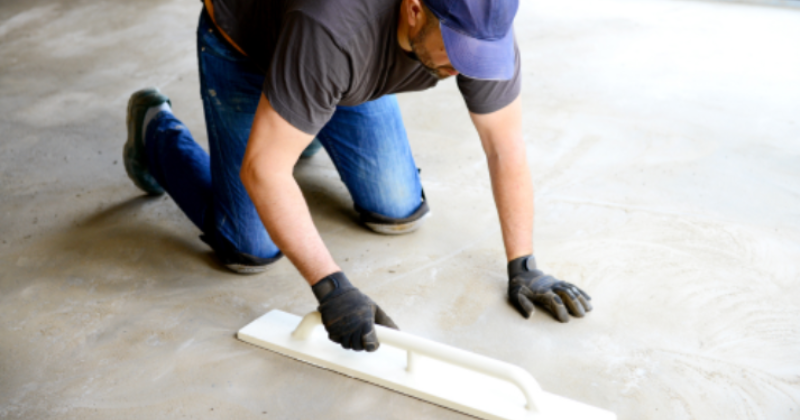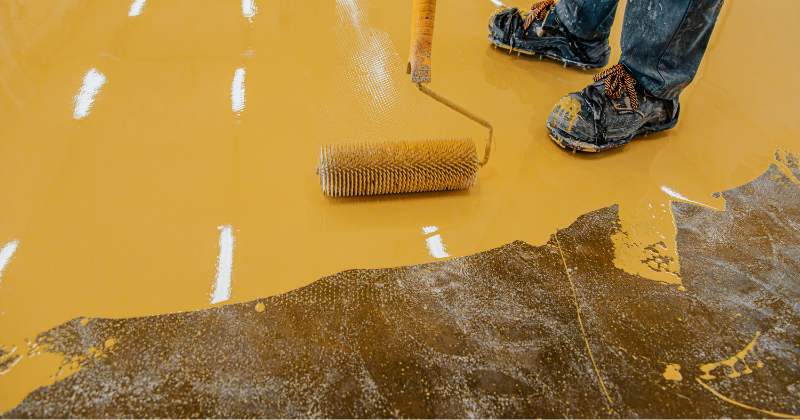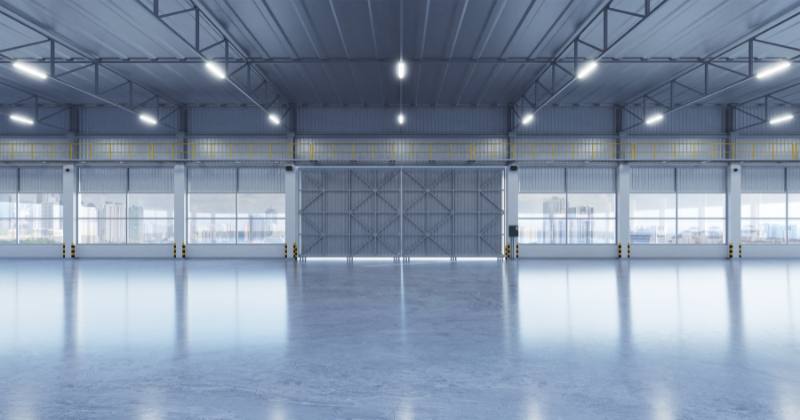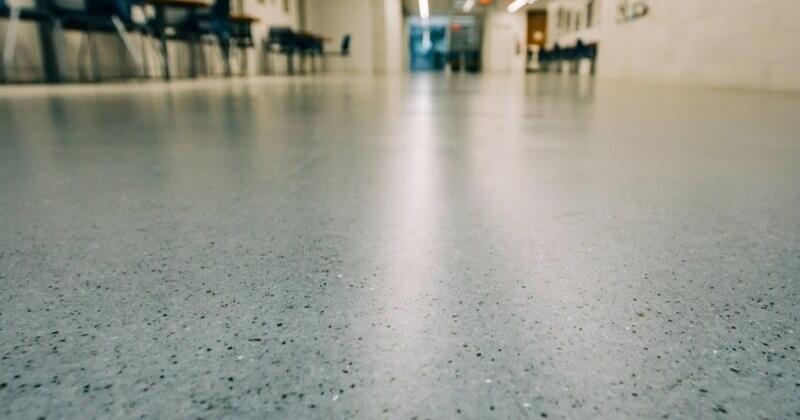The Finishing Touch: Plain vs. Coated vs. Polished Concrete
Concrete, once relegated to the realm of industrial and utilitarian spaces, has become a versatile and stylish material in contemporary design. As concrete floors gain popularity, the choice of finish is a crucial decision that defines aesthetic and functional characteristics of a given space.
Let’s take a look at the pros and cons of plain, sealed, and polished concrete options.

Why Have a Natural Concrete Floor?
Plain or raw concrete is the unadorned, natural state of this robust material. Often associated with industrial spaces, warehouses, and garages, plain concrete is appreciated for its minimalist and utilitarian appeal. It offers a rugged, unpretentious look that can be embraced for its raw authenticity. However, plain concrete is porous and susceptible to staining, making it less suitable for high-traffic areas without additional treatment.
Pros of Raw Concrete:
- Industrial aesthetic
- Cost-effective
- Durable
Cons of Raw Concrete:
- Prone to staining
- Requires regular maintenance
- Limited aesthetic variation

What Benefit Does Coating Coated and Sealed Concrete Offer?
Sealing concrete involves applying a protective coating to the surface. This process enhances the concrete's resistance to moisture, stains, and abrasion. Sealers come in various types, including acrylic, epoxy, and polyurethane, each offering different levels of protection and aesthetics. Sealed concrete is a versatile option, suitable for both indoor and outdoor applications. It can also be a clear sealer.
Pros of Coated and Sealed Concrete:
- Provides protection against stains and moisture
- Enhances color and adds a subtle sheen
- Extends the lifespan of the concrete
- Easy to clean and maintain
Cons of Coated and Sealed Concrete:
- Requires reapplication over time
- Initial cost varies based on the type of sealer
- Appearance may differ from the natural concrete look

How Does Polished Concrete Compare?
Polished concrete takes plain concrete to a whole new level of refinement. Through a process of grinding, honing, and polishing the surface, a sleek and glossy finish is achieved. This process not only enhances the visual appeal but also improves the concrete's durability and resistance to wear and tear. Polished concrete is a popular choice for commercial spaces and upscale residential buildings.
Pros of Polished Concrete:
- High aesthetic appeal
- Increased durability
- Easy to clean and maintain
- Reflective surface enhances lighting
Cons of Polished Concrete:
- Initial installation cost is higher than plain concrete
- Requires professional expertise
- Susceptible to scratches
As we can see, each option has its mixture of pros and cons. Stonhard took this into consideration when developing our Stoncrete epoxy system, which achieves the highly desirable look of polished concrete but in a more durable, longer-lasting floor.

Why Install Stoncrete EFX Instead of Polished Concrete?
Stoncrete EFX, a troweled mortar system, is ideal for commercial spaces like school corridors, office spaces, upscale restaurants, retail stores, and many other environments, including industrial facility lobbies and corridors. It can be used in new flooring installation projects or to resurface existing floor surfaces like damaged polished concrete.

Three unique decorative aggregates give Stoncrete a beautiful design, with choices like 100% mirror glass, a blend of recycled amber glass, or domestically mined quartz.
Stoncrete EFX offers sought-after features like slip resistance, stain resistance, high-traffic durability, and easy maintenance. Want to learn more about Stoncrete?
Click here to read more in depth about the features and benefits between Stoncrete EFX and polished concrete.
The Stonhard Difference
For nearly a century, Stonhard has delivered a proven, single-source service, covering both your products and installation. Stonhard's seamless, long-wearing, and easy-to-clean systems are engineered to perform in both industrial and commercial environments without sacrificing design innovative vision. Contact your local Territory Manager or Architectural Design & Engineering Representative for more information.